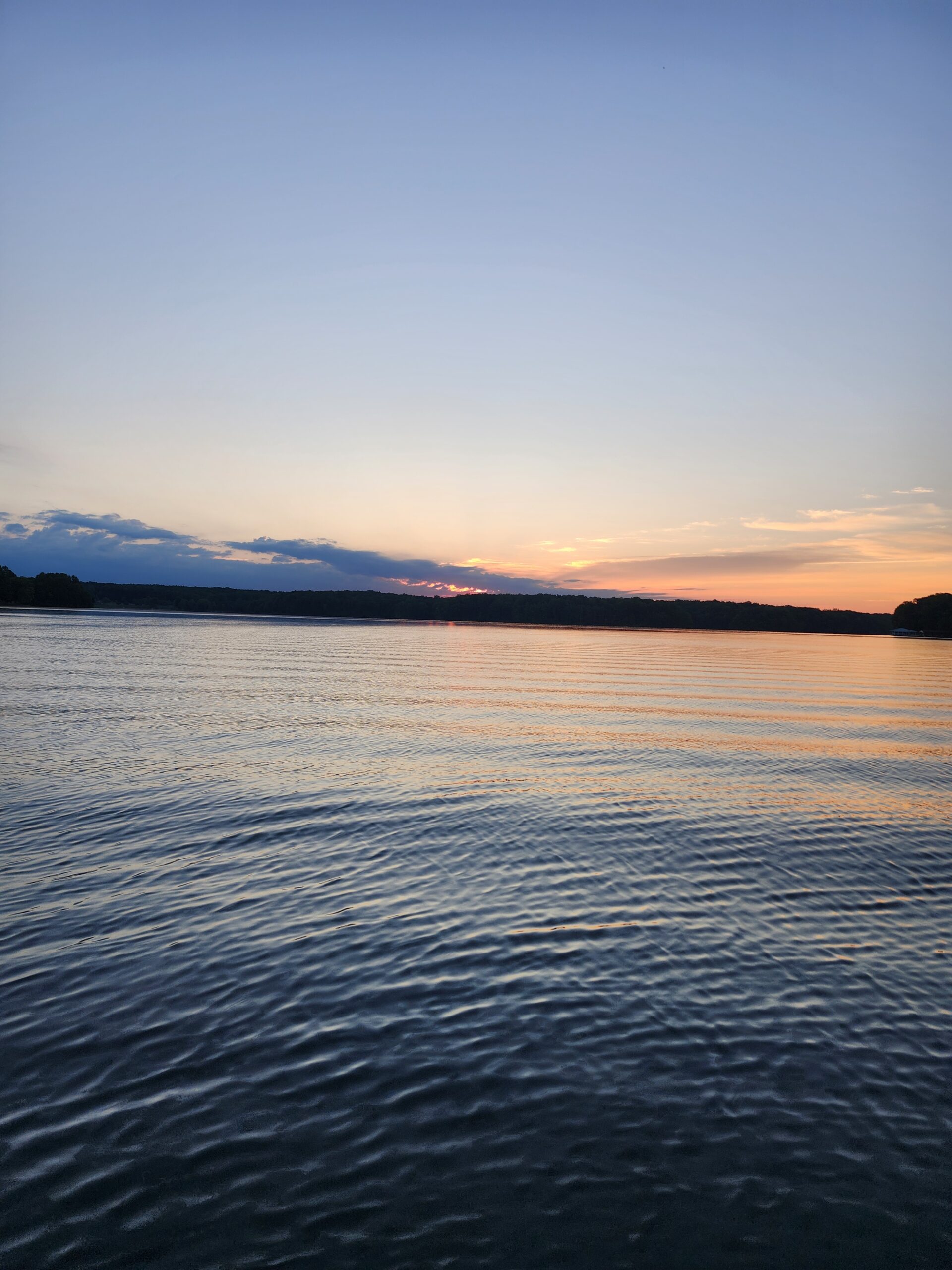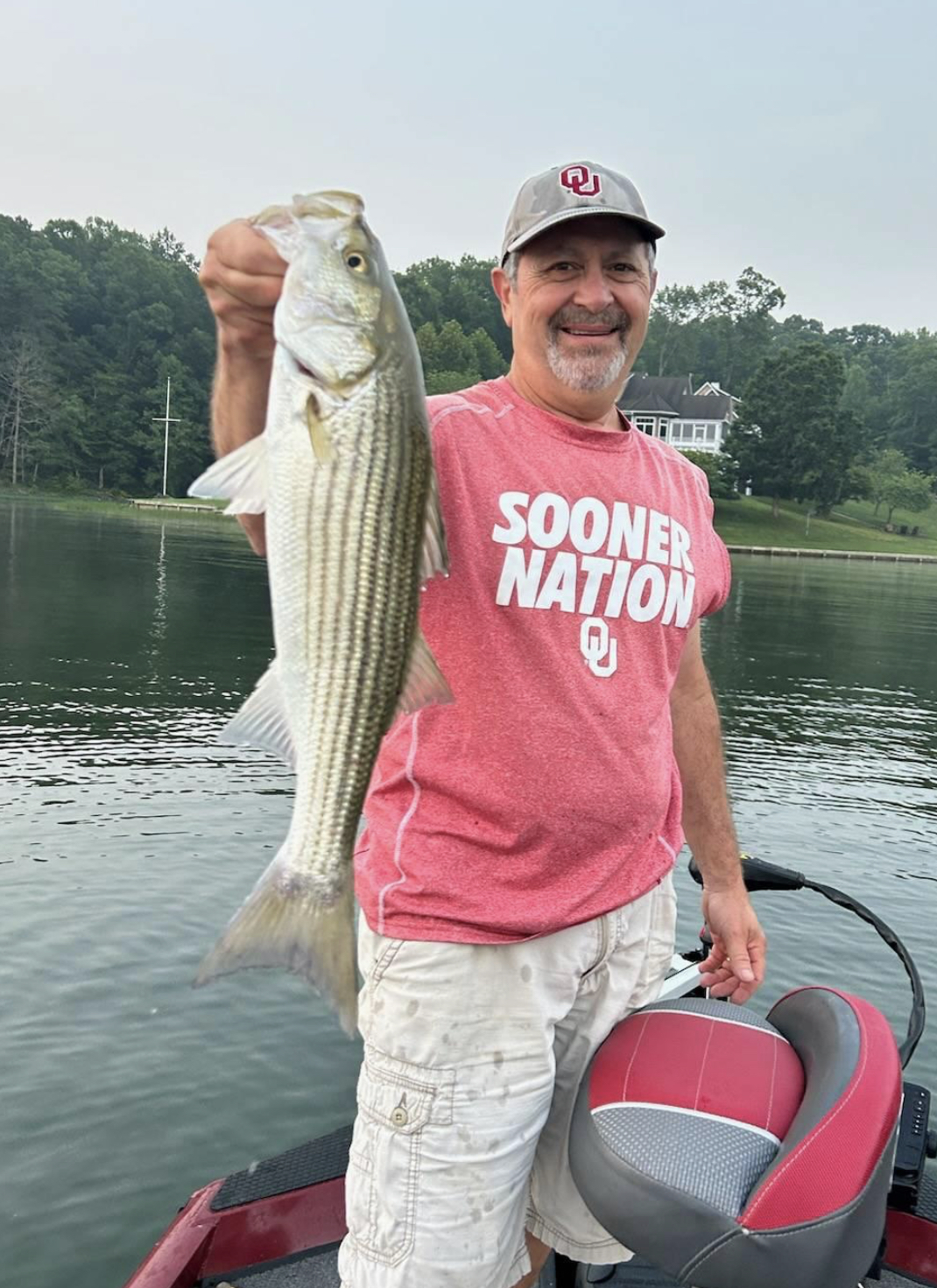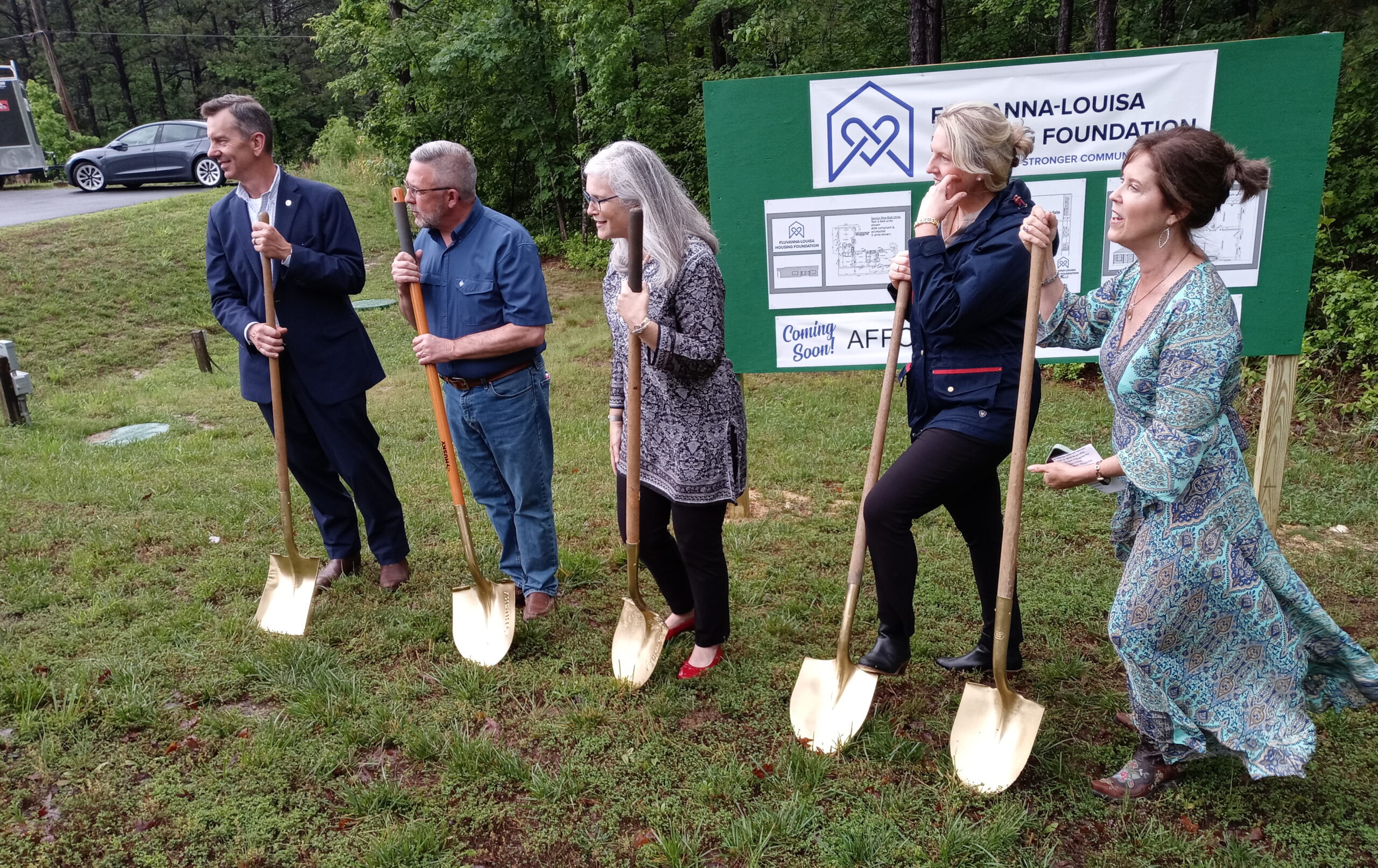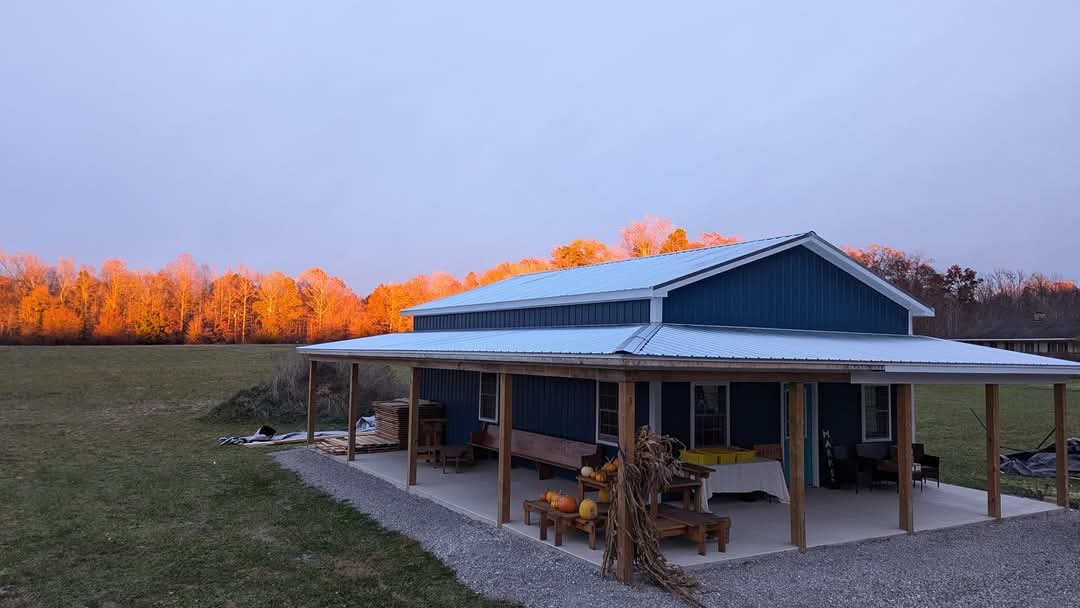
Weather folklore, like any folklore, is deeply rooted in patterns that were observed by individuals many years ago. Hundreds to even thousands of years ago, people had very little understanding of how the weather works. Since they did not have TV, radio, or the Internet, they would keep track of what happened each day. Sometimes they would find a pattern that repeated itself and then used this to make a weather prediction. Some weather folklore seems to be linked to cloud formations in the sky, while others are linked to plants and animals.
“Mackerel Sky, Mackerel Sky, not long wet and not long dry.” This piece of folklore is deeply rooted in mariners’ weather books as a sign of a rapidly approaching storm. The Mackerel Sky part is the description of the cirrocumulus clouds that can occur ahead of an approaching storm. These clouds are very high in the atmosphere, usually above 20,000 feet, and are somewhat fluffy like cumulus clouds. At sunset or sunrise, these clouds are highly reflective of light and sometimes are seen as a blanket of deep orange or red colors. The “not long wet, not long dry” part comes from the fact that storms associated with Mackerel Skies are usually fast-moving storms, so the rain arrives quickly and then probably moves out by the next day.
Another famous mariner saying is, “Red sky at night; Sailors delight; Red sky in morning; Sailor’s warning.” The red sky comes from the low sun angle in the morning and evening that travels through a thicker part of the atmosphere. This results in the sunlight hitting many particles that scatter the warmer colors of red and orange. If the sky is red in the evening, then the western sky must be clear, so no storms are on the horizon. The red sky in the morning means the eastern sky is clear and clouds must be approaching from the west. Therefore, a storm is approaching.
Here is a great one for fishing fanatics (like me): “When trout refuse bait or fly, there is ever a storm nigh.” This probably is just a way for fishermen to blame the weather if fish are not biting. Most fishermen I know are oblivious to the weather if the fish are biting.
“To know when the first frost will end your growing season, count six months from the first thunderstorm of the year.” We had thunderstorms in early April, so that would put the first frost for the area in early October. This might be a little early, but we will know in six months.
“Doors and drawers stick before a rain.”
When doors and drawers were made with wood, this seems like a good piece of folklore. When humidity rises, wood will absorb some moisture, and that causes the wood to expand and make doors and drawers harder to open. Rising humidity usually means rain is on the way.
“When pipes smell stronger, it’s going to rain.” and “When ditches and ponds offend the nose, Look for rains and stormy blows.”
Odors tend to adhere to molecules of moist air much better than dry air. The humidity helps to hydrate the aromas and make them stronger, so we can smell them better.

I grew up an Air Force Brat. Traveled the country and lived in Georgia, Maine, New York, Hawaii and Oklahoma.
I fell in love with the weather in Oklahoma. My father was transferred to Tinker AFB in 1973. While in Temporary housing (a mobile home, which is the standard in Oklahoma) I experienced my first severe thunderstorm with strong winds and hail the size of baseballs. The next day I was in the base library looking up books on weather. The rest is history.
I graduated from the University of Oklahoma in 1983 with a Bachelor’s Degree in Meteorology. The first two years we took Calculus, Differential equations, Physics, Chemistry and Computer science classes with the Engineering Students. It was a grind. My degree is actually from the College of Engineering. The last 2-3 year’s focus was on Meteorology including Observational networks (Satellite, Radar, Surface), Physics, Thermodynamics, Dynamics, Synoptic, Winter Weather, Severe Weather and Climatology.
My first job out of college was with a small forecasting company in Oklahoma City. I was immediately put on TV (OETA) and Radio (WKY) as their broadcast Meteorologist. After two years in broadcasting, I decided to pursue the National Weather Service route and got a position in Toledo, OH as an intern. After a couple of years, I was promoted to a forecaster position at the Cleveland Forecast office. I quickly moved into the Weather Preparedness position and was responsible for all the preparedness activities in the state of Ohio.
In 1992 I decided to pursue other forecast opportunities and moved to the Meteorological Operations Division of the National Meteorological Center in Washington, DC. This group is now called WPC (Weather Prediction Center). There I fine-tuned my forecasting of Synoptic Weather with my focus on Heavy Convective Rainfall and Winter Storms, under the supervision of Dr. Louis Uccellini. He has written several books on East Coast Winter storms. I was promoted to a Senior Branch Forecast position during my tenure at MOD. Part of my job was to teach weather classes at COMET (Cooperative Program for Operational Meteorology, Education, and Training).
In 2012 I was given the opportunity to start up a new weather support group with the FAA (Federal Aviation Administration) in Warrenton, VA at the ATCSSC (Air Traffic Control System Command Center). The ATCSCC is where the FAA identifies solutions to air traffic inefficiencies in the NAS (National Air Space) for the CONUS (Continental United State). Weather impacts are the biggest impact on Aviation with yearly losses over 20 billion dollars. My job was to help lower these inefficiencies/costs by providing weather impact briefings and forecasts in order to keep the air planes moving as safely and efficiently as possible.
I retired in 2022 and now am running Lake Anna Weather, LLC.
Subscribe for Updates
Sponsors
latest articles
Local Mini Tyrell Scores Victory on the Track; Raises $800,000 to Fight Cancer

Letter from the Editor: Go Ahead, Burn the Toast

[Sponsored] Comfort, Savings, and More at Coastal Insulation
![Featured image for “[Sponsored] Comfort, Savings, and More at Coastal Insulation”](https://lakeanna.online/wp-content/uploads/2025/05/Seamless-Shower-Door-scaled.jpg)
Rustic Tavern Coming to 208

Red Sky in the Morning, Sailors Warning

Did Curiosity Kill Schrödinger’s Cat? At Chateau MerrillAnne, It Made a Remarkable Chardonnay Instead

Weather folklore, like any folklore, is deeply rooted in patterns that were observed by individuals many years ago. Hundreds to even thousands of years ago, people had very little understanding of how the weather works. Since they did not have TV, radio, or the Internet, they would keep track of what happened each day. Sometimes they would find a pattern that repeated itself and then used this to make a weather prediction. Some weather folklore seems to be linked to cloud formations in the sky, while others are linked to plants and animals.
“Mackerel Sky, Mackerel Sky, not long wet and not long dry.” This piece of folklore is deeply rooted in mariners’ weather books as a sign of a rapidly approaching storm. The Mackerel Sky part is the description of the cirrocumulus clouds that can occur ahead of an approaching storm. These clouds are very high in the atmosphere, usually above 20,000 feet, and are somewhat fluffy like cumulus clouds. At sunset or sunrise, these clouds are highly reflective of light and sometimes are seen as a blanket of deep orange or red colors. The “not long wet, not long dry” part comes from the fact that storms associated with Mackerel Skies are usually fast-moving storms, so the rain arrives quickly and then probably moves out by the next day.
Another famous mariner saying is, “Red sky at night; Sailors delight; Red sky in morning; Sailor’s warning.” The red sky comes from the low sun angle in the morning and evening that travels through a thicker part of the atmosphere. This results in the sunlight hitting many particles that scatter the warmer colors of red and orange. If the sky is red in the evening, then the western sky must be clear, so no storms are on the horizon. The red sky in the morning means the eastern sky is clear and clouds must be approaching from the west. Therefore, a storm is approaching.
Here is a great one for fishing fanatics (like me): “When trout refuse bait or fly, there is ever a storm nigh.” This probably is just a way for fishermen to blame the weather if fish are not biting. Most fishermen I know are oblivious to the weather if the fish are biting.
“To know when the first frost will end your growing season, count six months from the first thunderstorm of the year.” We had thunderstorms in early April, so that would put the first frost for the area in early October. This might be a little early, but we will know in six months.
“Doors and drawers stick before a rain.”
When doors and drawers were made with wood, this seems like a good piece of folklore. When humidity rises, wood will absorb some moisture, and that causes the wood to expand and make doors and drawers harder to open. Rising humidity usually means rain is on the way.
“When pipes smell stronger, it’s going to rain.” and “When ditches and ponds offend the nose, Look for rains and stormy blows.”
Odors tend to adhere to molecules of moist air much better than dry air. The humidity helps to hydrate the aromas and make them stronger, so we can smell them better.

I grew up an Air Force Brat. Traveled the country and lived in Georgia, Maine, New York, Hawaii and Oklahoma.
I fell in love with the weather in Oklahoma. My father was transferred to Tinker AFB in 1973. While in Temporary housing (a mobile home, which is the standard in Oklahoma) I experienced my first severe thunderstorm with strong winds and hail the size of baseballs. The next day I was in the base library looking up books on weather. The rest is history.
I graduated from the University of Oklahoma in 1983 with a Bachelor’s Degree in Meteorology. The first two years we took Calculus, Differential equations, Physics, Chemistry and Computer science classes with the Engineering Students. It was a grind. My degree is actually from the College of Engineering. The last 2-3 year’s focus was on Meteorology including Observational networks (Satellite, Radar, Surface), Physics, Thermodynamics, Dynamics, Synoptic, Winter Weather, Severe Weather and Climatology.
My first job out of college was with a small forecasting company in Oklahoma City. I was immediately put on TV (OETA) and Radio (WKY) as their broadcast Meteorologist. After two years in broadcasting, I decided to pursue the National Weather Service route and got a position in Toledo, OH as an intern. After a couple of years, I was promoted to a forecaster position at the Cleveland Forecast office. I quickly moved into the Weather Preparedness position and was responsible for all the preparedness activities in the state of Ohio.
In 1992 I decided to pursue other forecast opportunities and moved to the Meteorological Operations Division of the National Meteorological Center in Washington, DC. This group is now called WPC (Weather Prediction Center). There I fine-tuned my forecasting of Synoptic Weather with my focus on Heavy Convective Rainfall and Winter Storms, under the supervision of Dr. Louis Uccellini. He has written several books on East Coast Winter storms. I was promoted to a Senior Branch Forecast position during my tenure at MOD. Part of my job was to teach weather classes at COMET (Cooperative Program for Operational Meteorology, Education, and Training).
In 2012 I was given the opportunity to start up a new weather support group with the FAA (Federal Aviation Administration) in Warrenton, VA at the ATCSSC (Air Traffic Control System Command Center). The ATCSCC is where the FAA identifies solutions to air traffic inefficiencies in the NAS (National Air Space) for the CONUS (Continental United State). Weather impacts are the biggest impact on Aviation with yearly losses over 20 billion dollars. My job was to help lower these inefficiencies/costs by providing weather impact briefings and forecasts in order to keep the air planes moving as safely and efficiently as possible.
I retired in 2022 and now am running Lake Anna Weather, LLC.
Subscribe for Updates
Sponsors
latest articles
Local Mini Tyrell Scores Victory on the Track; Raises $800,000 to Fight Cancer

Letter from the Editor: Go Ahead, Burn the Toast

[Sponsored] Comfort, Savings, and More at Coastal Insulation
![Featured image for “[Sponsored] Comfort, Savings, and More at Coastal Insulation”](https://lakeanna.online/wp-content/uploads/2025/05/Seamless-Shower-Door-scaled.jpg)
Rustic Tavern Coming to 208

Red Sky in the Morning, Sailors Warning

Did Curiosity Kill Schrödinger’s Cat? At Chateau MerrillAnne, It Made a Remarkable Chardonnay Instead


Exclusive Golf Excursions for Cutalong Members
Article By Jen Bailey

Housing Foundation Breaks Ground for Affordable Housing in Louisa
Article By Jen Bailey






